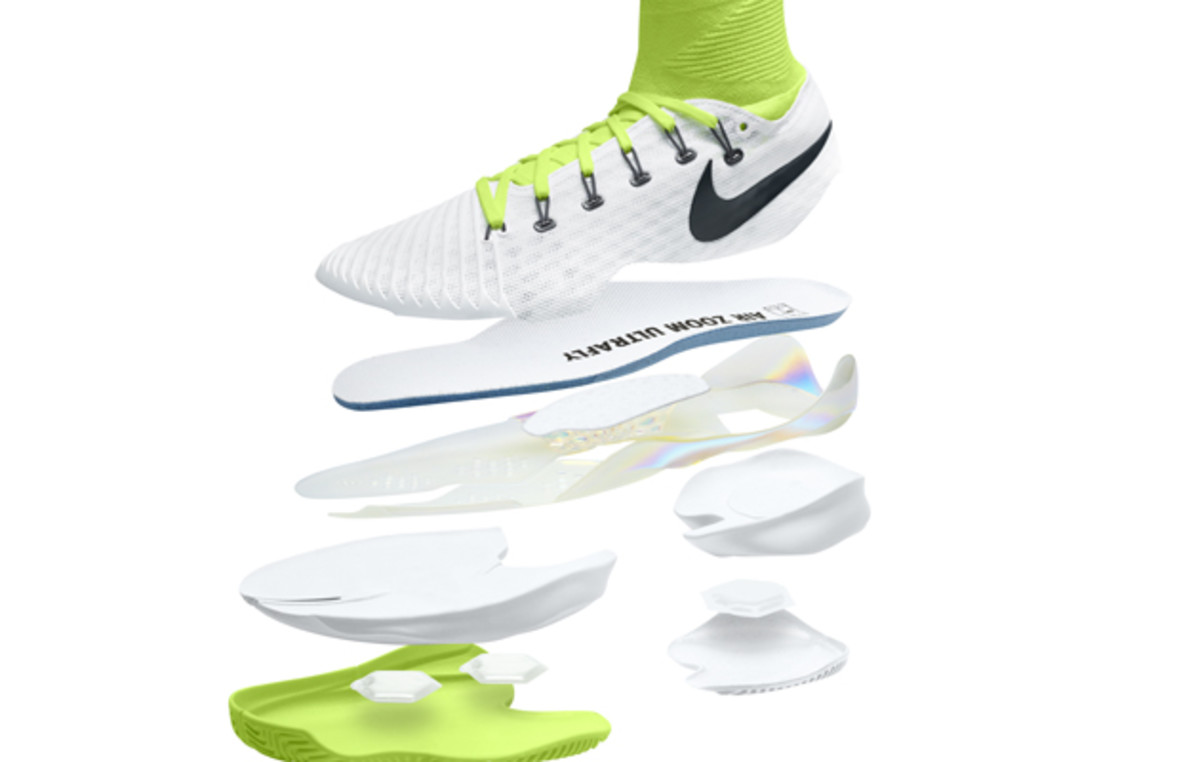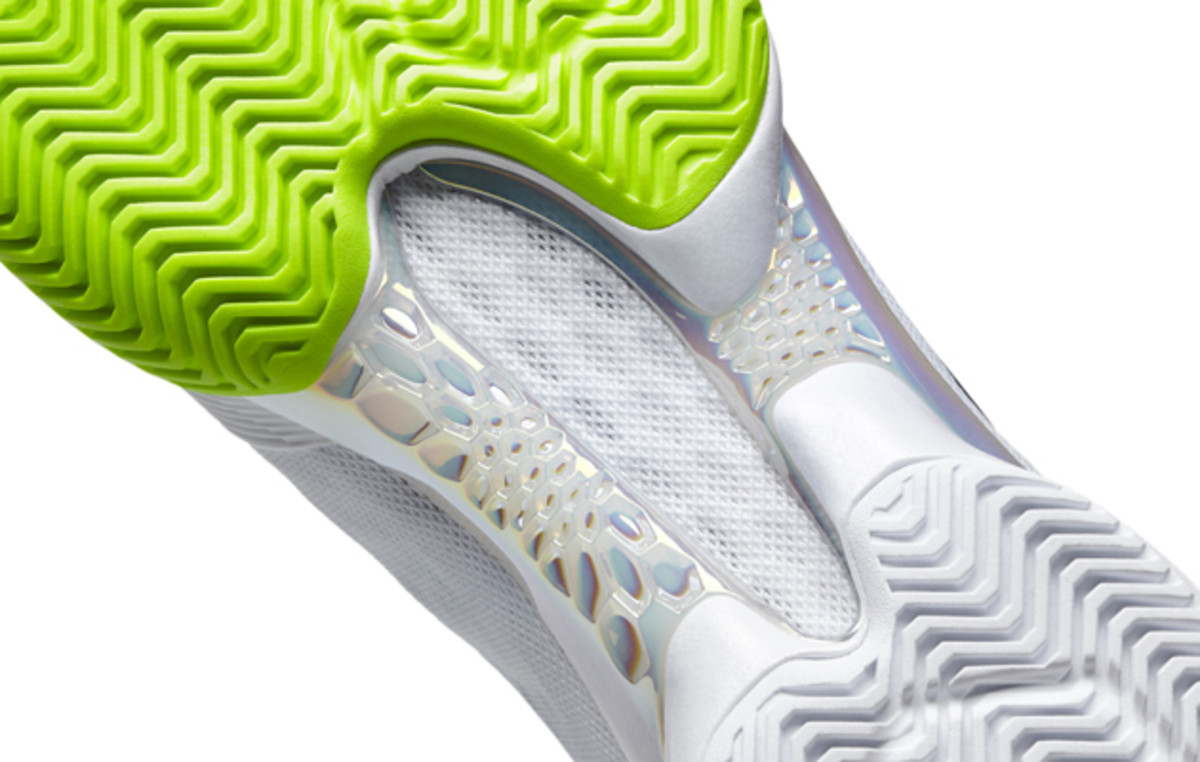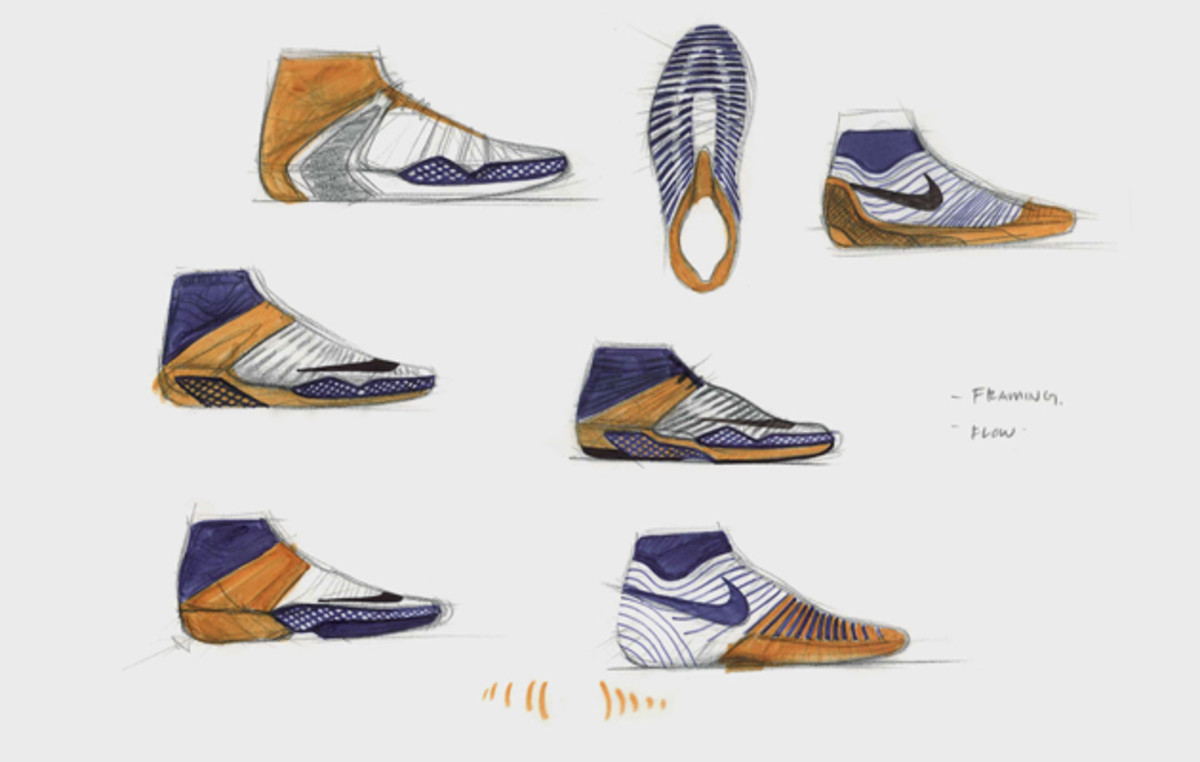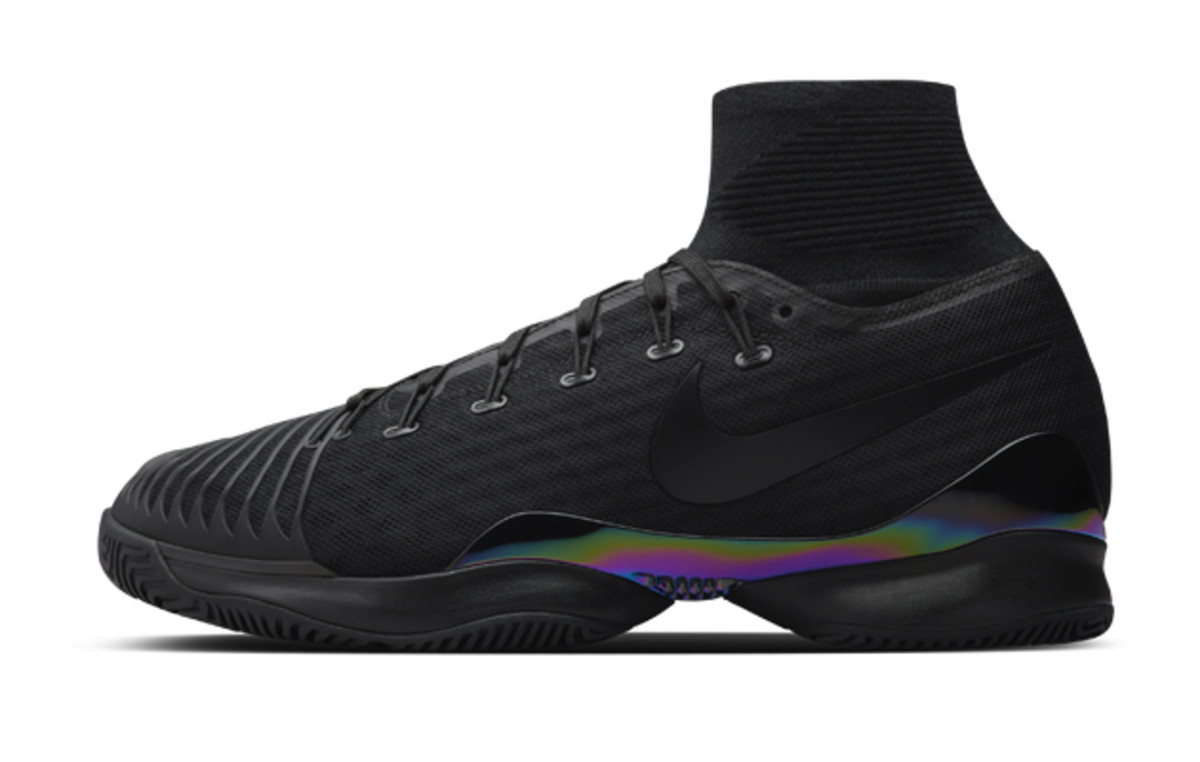Eugenie Bouchard, Jack Sock turn focus to on-court speed

Genie Bouchard knows the value of on-court quickness. “Speed is very important,” she says. “If you can’t even get to the ball, you can’t hit it. So you definitely need speed and every little bit helps.”
Sure, training plays a massive role in developing that speed, but Bouchard says her on-court gear can also prove a contributing factor. As Nike unveils a brand-new tennis footwear line, the NikeCourt Air Zoom Ultrafly, they do so having worked with professional athletes for the last three years, especially in relation to off-court training.
Nike found that many tennis athletes spend time on the track—in track spikes—as a way to improve speed. “As a designer,” says Michael Hui, Nike’s tennis footwear senior designer, “you think visually. Putting the two together—a tennis shoe and a track spike—was the ignition point for what the [Ultrafly] was to become.”

Nike borrowed insights from track and soccer to give Bouchard’s planned footwear for Indian Wells a different sort of silhouette from the traditional tennis shoe. “If you were to ask someone what a tennis shoe looks like, they would say that it’s usually made out of leather and pretty wide and boxy on the toe,” Hui says. “[The Ultrafly] really shatters a lot of those myths.”
The SI Extra Newsletter Get the best of Sports Illustrated delivered right to your inbox
Subscribe
To get there, Nike used a track-tested Pebax propulsion plate, hexagonal Zoom Air units underfoot, asymmetrical lacing and a Flyknit—engineered yarn for lightweight strength—ankle cuff.

“It looks less like a traditional tennis shoe and more like a soccer cleat, which is incredibly cool,” Bouchard says. “It’s like nothing we’ve seen in tennis before.”
Bouchard isn’t the only athlete planning to don the Ultrafly at Indian Wells. American Jack Sock has made the switch too, saying that footwork and speed are two of his biggest strengths on the court, “so when I got into the shoe, I felt like my quickness improved, which was a big confidence booster for me.”

The asymmetrical design allows Bouchard and Sock optimal support when on the move. “The asymmetry of the shoe comes from this idea of being able to quickly move and push off,” Hui says. “Tennis is played on the edges of the shoes; you’re moving so quickly that you barely have time to really stand flat. The shoe is designed to provide maximum contact when you’re on the corners.”
The lightness of the shoe, Bouchard says, helps with her on-court speed and the addition of a Flyknit collar on the ankle gives her peace of mind. “I love the extra sense of support I get with it around my ankle,” she says. “I just feel super confident when I’m moving in it.”
Sock says the Flyknit addition gives him a better feel for the court and a feeling of stability. “Everyone’s different, but I think the snug feel is definitely popular on tour,” he says. “A lot of guys like to feel like they are held tightly in their shoe. That feeling helps you move around the court quicker. Obviously, court coverage is a bit part of today’s game, so feeling tight and snug in the shoe is big for me.”

Both the 22-year-old from Montreal and the 23-year-old from Kansas also enjoy the fact they will have a different on-court aesthetic than the sport’s tradition. “I love the look. I love the Flyknit collar,” Bouchard says. “It’s so different and it’s just going to stand out in tennis so much.”
Sock says he always likes to be different, to be a trendsetter. “It’s definitely something we’ve never seen before in tennis,” he says. “It’s going to be an eye-looker, a head-turner. People are definitely going to look at it and be doing double takes.”
And while the Ultrafly will stand out aesthetically, the real value comes for Bouchard and Sock if it helps their speed to shine. Even just a little bit.
Tim Newcomb covers stadiums, sneakers and design for Sports Illustrated. Follow him on Twitter at @tdnewcomb.
